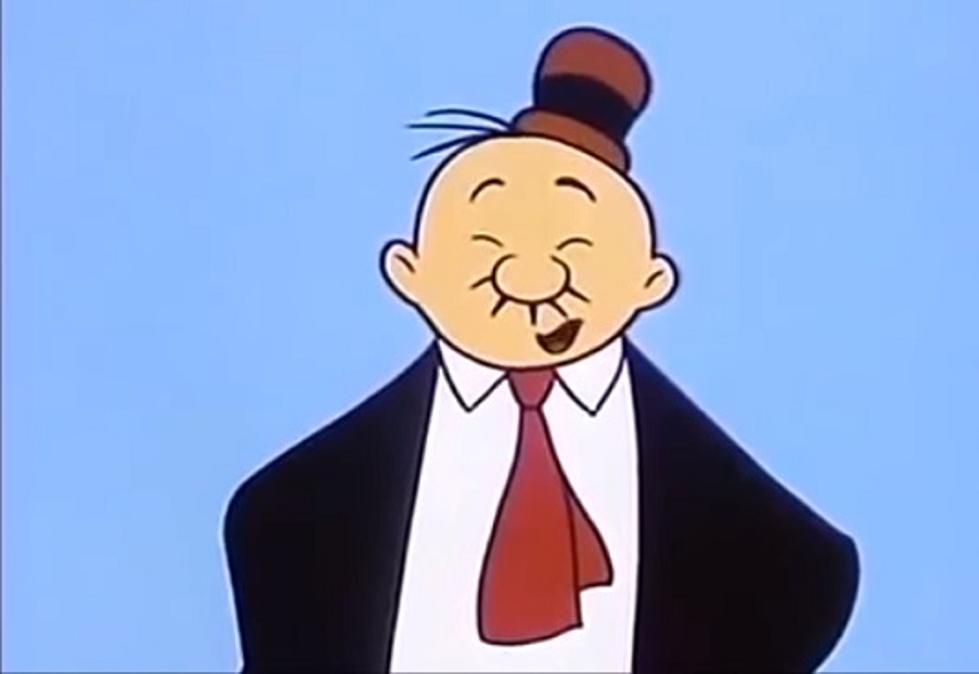(Guest post by Greg Forster)
Robert Pondiscio apparently wants to make it as hard as possible for him to accomplish his own goals. In a new article for AEI, he attacks school choice for the unforgiveable crime of being something other than a campaign to fight CRT in the government monopoly school system.
In doing so, he alienates his own allies. He says he’s a choice supporter. Choice supporters are also, overwhelmingly, opponents of CRT. (My own views on CRT are available here.) So why Pondiscio has decided he wants to alienate the people whose support he could definitely use in the fight for his own cause by gratuitously sneering at their cause is not clear.
“Your thing is bad, even though I support it, because your thing is not the same thing as my thing!”
Sorry, you’ll have to give me a minute – my eyes rolled back so far, they fell out.
More importantly, by attacking school choice, Pondiscio attacks the only policy that can actually force the government school monopoly to make the kind of changes Pondiscio himself wants, nationally and at scale. Pondiscio goes on at great length making the point that it isn’t enough to save individual students, we need to have a systemic impact at the national level. What is the only education policy that has succeeded in having a systemic impact at the national level?
EdChoice, even though they use a more restrictive counting method than I favor, counts 27 studies on the systemic impact of school choice; 25 are positive.
What other political strategy for making change happen in the government school monopoly even comes close to this track record?
The feds spent $6 billion on Reading First, with all the weight of the federal government to support the effort, and got zilch to show for it. Bill Gates spent comparably huge amounts assembling an enormous political effort for Common Core, and got zilch to show for it.
What resources or advantages does Pondiscio have at his disposal that these efforts didn’t have?
Especially if he’s decided to gratuitously poke a stick in the eye of the only people who might be reliable allies?
Miracles? Underpants gnomes?
Sure, you can pass legislation attempting to influence the content of what gets taught in the classroom. You know what other efforts did that? Reading First, Common Core, No Child Left Behind, etc.
Not all the anti-CRT laws are bad laws, as far as they go. But none of them will have the real-world effect of implementing the changes Pondiscio wants.
It’s a long-proven fact that when government monopoly schools don’t do a good job of teaching math and reading, the only thing that reliably forces them to start doing a good job of teaching math and reading is parents walking out the door using school choice.
What do you think schools will do when parents walk out the door not over reading and math, but over political indoctrination of their children?
After all, there are a lot more parents upset about CRT than there are parents who are upset about the teaching of math and reading in their own children’s government schools!
(I’m sure someone out there wants to raise the canard that private schools have all gone woke now. Actually, a representative “typical” private school might be either an urban Catholic school or an exurban evangelical school. A tiny handful of stories coming out of an even tinier number of woke progressive academies have made a big splash in click-hungry social media, but are not representative – especially not of what would happen to the composition of private schools if the option to attend them were extended universally, instead of being available only to those who can afford it.)
Update: I should also have addressed Pondiscio’s hand-waving placeholder for an argument that “the percentage of families with ready access to more than a small handful of quality options is probably quite modest.” Of course, to the extent that this is even true, which Pondiscio seems to be aware is a problematic question, the only reason we don’t have more and better private schools is precisely because of the government monopoly on schooling. This is like saying Mexico couldn’t possibly privatize its national oil monopoly because there aren’t enough private oil companies in Mexico to do the work.
Pondiscio is free to pound the table and demand that we need to fight CRT in the government school monopoly all he wants. I agree! I agree so much, I even have a political strategy for doing it that might actually work: let parents choose, thus creating real accountability pressure on schools.
What is Pondiscio’s political strategy to force the government school monopoly to make the changes he wants, if not by creating pressure for change by allowing parents who don’t want CRT to walk out the door?
Have fun storming the castle! Let us know when you’re tired of all the winning.




Greg, I love ya, but you missed the mark on this one. Pondiscio did not “attack school choice.” All he did was argue against the proposition that “school choice is the solution to Problem X.” Pondiscio thinks school choice is a great and wonderful thing and he’s for it — but we should all concede that it’s not a panacea.
Saying, “a hammer is great but it won’t help me install this screw” is not to “attack hammers.”
But props on the great cultural references.
One more thing: Pondiscio isn’t even saying school choice isn’t *helpful* here. He’s just arguing that school choice *alone* doesn’t suffice. So to build on my previous metaphor, it’s like saying, “Sure, I need a hammer to build this bed, but a hammer alone is not enough. I also need a screwdriver.”
And that’s basically what you’re saying. He’s arguing “choice is not sufficient” and you’re saying “choice is necessary.” Both propositions are true.
Looks like you read some different article.
For example, Pondiscio writes: “ School choice may “solve” the CRT problem for a family, but it can’t address the clear interest every American holds in the education of the next generation.”
False! Thank you for playing.
Policies which give to individual parents the power to determine for their own individual children which institution, if any, shall receive whatever subsidy taxpayers will spend on those parents’ children will (a) reduce instruction costs, (b) improve instruction quality, and (c) reduce conflict over curricula.
We no more have to agree on curricula than we have to agree on the lunch menu or the size and style of shoes all children age 6 — 18 must wear.
(Greg): “So why Pondiscio has decided he wants to alienate the people whose support he could definitely use in the fight for his own cause by gratuitously sneering at their cause is not clear.”
I have asked that question, also, of other school choice supporters.
Choice –is– a panacea.
Indeed! Chubb and Moe declared “school choice is a panacea” because they were literate adults who knew the meaning of the term “panacea” and were writing in order to communicate with other literate adults who knew (or were willing to look up) what that word actually means.
School choice is absolutely the correct response to CRT and overall political indoctrination. There is ZERO chance of legislation or political manuevering being able to stop the “woke” indoctrinees of the “woke” educational institutions from pushing their beliefs on the children who are forced to attend their schools. The “woke” teachers are not going to be dissuaded, deterred or even slowed down. We must let parents remove their children from those schools. We must sensible people have the opportunity to start up schools that do not indoctrinate, that teach math straight-up without political agenda, that teach phonics systematically and that maintain discipline without fear of being labeled a racist. We must have schools of choice run by teachers who have not been indoctrinated by the universities. Only schools of choice, where parents who agree send their children, can dare to counter the orthodoxy coming out of our colleges and universities.
But, how do people really know what is going on in our schools?
Firstly, to know that indoctrination is going on takes some sophistication. Most people, especially parents, trust that teachers know what they’re doing and have the best of intentions. Secondly, how do parents get to know the material and dialogue that goes on in the classroom. Both these conditions need to be present for parents to want to seek other choices. Or at least to be able to speak out and ask the school to change.
I remember this high profile example of a UK father who achieved a change. But, only because he had a physical object as an exhibit. His child said they had seen Gore’s movie, “An Inconvenient Truth” and the father was then able to take the issue to court and won a substantial victory. Thereafter, if the film is to be shown in UK schools it has to be accompanied by discussion of 9 “untruths” contained in the film.
What concrete proofs do parents have to either challenge or exit their schools in such instances where CRT, poor reading approaches, confusing math, or other indoctrination or poor practices are occurring?
Of course, with education choice policies, we will need “truth in advertising” provisions. This school uses phonics to teach reading, CRT is practised here, CRT is not practised here, etc.
Once choice exists, schools have very strong incentives to keep parents well informed. There’s no need to force them. That’s why private school parents know so much more about their schools!
For rigorous evidence in support of Greg’s claim here see https://journals.sagepub.com/doi/pdf/10.1177/1532673×09350981
I’ve met Robert, consider him a friend. Parental choice is the best tool for inducing change, and as you point out nothing does a better job of it. Choice can be messy and unpredictable, but damn so is life among 331 million people. From my experience as a charter school educator and what this blog points out continuously, choice does the most for the most.
“Choice can be messy and unpredictable, but damn so is life among 331 million people.”
I’m going to put this on my business card!